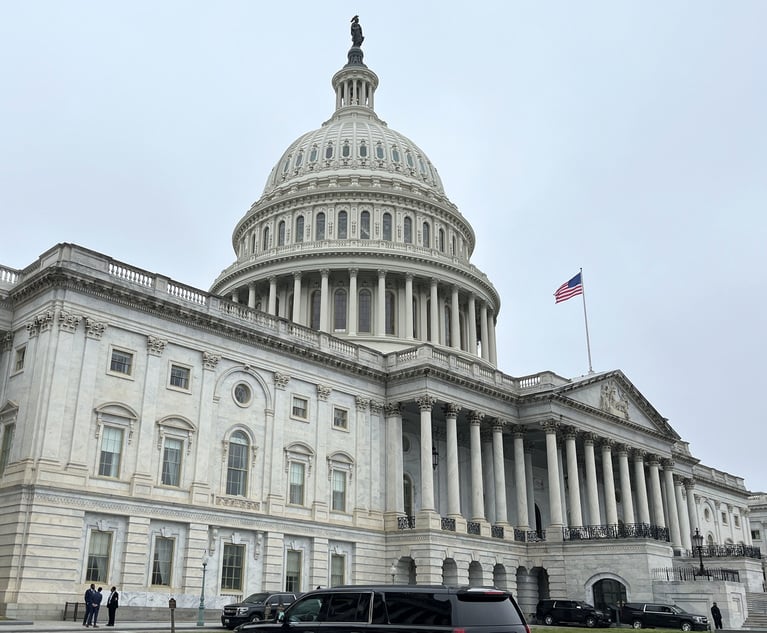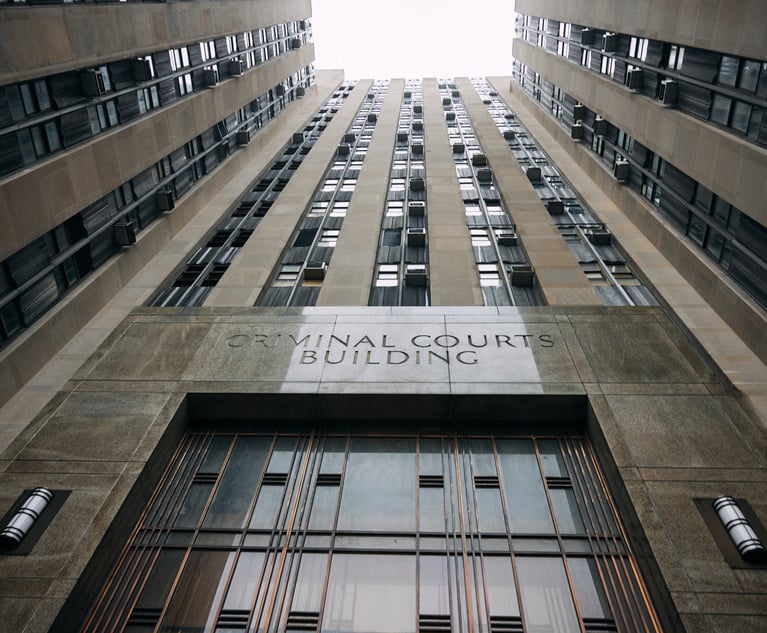Thank you for reading The Marble Palace Blog, which I hope will inform and surprise you about the Supreme Court of the United States. My name is Tony Mauro. I’ve covered the Supreme Court since 1979 and for ALM since 2000. I semiretired in 2019, but I am still fascinated by the high court. I’ll welcome any tips or suggestions for topics to write about. You can reach me at [email protected].
The recent announcements that Jeffrey Minear, counselor to the chief justice, was retiring after 16 years, and that federal Judge Robert Dow Jr. is replacing him, caused some wonderment, mainly because, who knows what a counselor to the chief justice is?
“It’s an important job and a lot of people don’t know much about it,” said Robb Jones, who served in the position from 1991 to 1994, for then-Chief Justice William Rehnquist. Actually, during that time the job was named administrative assistant to the chief justice. It was also sometimes informally dubbed “chief of staff.”
“Counselor to the chief justice” was not an official title until Congress passed legislation in 2008 to make it official, partly because “administrative assistant” seemed to some like a mere clerical job. The counselor position is not listed on the court’s oral argument hearing list among other officers of the court, though it is listed elsewhere on the court’s website. The various titles may be part of the reason why the job is not well known.
In the press release announcing the new appointment, a brief summary of what the counselor does is this: “The counselor supports the chief justice as head of the federal judiciary, working in partnership with court executives and judges on matters of judicial administration, and as liaison to the executive and legislative branches on issues affecting the court. The counselor represents the chief justice in relations with judicial organizations, foreign courts, and visiting dignitaries. Judge Dow will also support the chief justice in his non-judicial responsibilities, including as chancellor of the Smithsonian Institution.”
In a 2013 interview, Minear described the job with Chief Justice John Roberts Jr. more simply: “I do what he tells me.”
The position is more complex than that. Minear was Roberts’ aide-de-camp during the first President Donald Trump impeachment in 2020. Likewise, then-administrative assistant James Duff helped Chief Justice William Rehnquist in 1999 during the President Bill Clinton impeachment trial. Duff also won high marks for defusing a dispute with Muslim organizations that objected to the depiction of the prophet Muhammad on the marble friezes, along with other lawgivers, on the upper walls of the Supreme Court chamber. As a result of negotiations, the court agreed to make changes in its literature and displays to make it clear that no offense was intended.
Counselors also touch base for the chief justice on the Administrative Office of the U.S. Courts, the Federal Judicial Center, the Judicial Conference, as well as helping the chief justice handle a range of visitors, from foreign justices to school groups. In addition to being chancellor of the Smithsonian, the chief justice is an ex officio trustee of the National Gallery of Art, so the counselor may have some non-legalistic work to do as well.
The history of the position of a formal helper for a chief justice may have begun when Chief Justice Fred Vinson hired an administrative assistant in 1946, according to the Federal Judicial Center’s Federal Judicial History branch. When Earl Warren became chief justice in 1956, he learned that his staff comprised a secretary, three law clerks and two elderly messengers. In his memoir Warren wrote, seemingly unhappily, that they were “my entire personal staff.”
Warren’s successor, Warren Burger, said in an interview in 1969, “The office of the chief justice desperately needs a high-level administrative deputy or assistant. I devour four to six hours a day on administrative matters apart from my judicial work, and it is not possible—not physically possible—to continue this schedule very long.”
As a result, Congress in 1972 approved legislation creating the position of administrative assistant to the chief justice as someone who would “serve at the pleasure of the chief justice” as a Supreme Court employee. Burger’s first assistant was Mark Cannon, director of a nonprofit in New York. Burger deliberately sought out a non-lawyer with government experience. Cannon served as the assistant from 1972 until 1986, when Burger retired.
Burger’s successor, Chief Justice William Rehnquist, frowned on the length of Cannon’s tenure, and for several years Rehnquist’s assistants had only two-year terms. Rehnquist later relaxed his two-year-term rule. Jones went on for a third year. James Duff, currently director of the Supreme Court Historical Society, worked as administrative assistant to Rehnquist from 1996 to 2000. Sally Rider, the first and only female administrative assistant to date, worked with Rehnquist from 2000 to 2006.
“It’s one of those jobs where you kind of blink and pinch yourself because you just parked next to David Souter’s beat-up Volkswagen Rabbit,” said Jones. “Then you’d be sitting with one or more of the justices and you just think how intimidating it was. Quite an experience. I’ve told many people it was the highest honor, the best job in my career, because it combined public service with jobs that were just never predictable.”
NOT FOR REPRINT
© 2024 ALM Global, LLC, All Rights Reserved. Request academic re-use from www.copyright.com. All other uses, submit a request to [email protected]. For more information visit Asset & Logo Licensing.


 Jeffrey Minear, now retired counselor to the chief justice. Photo: Diego M. Radzinschi/ALM
Jeffrey Minear, now retired counselor to the chief justice. Photo: Diego M. Radzinschi/ALM







